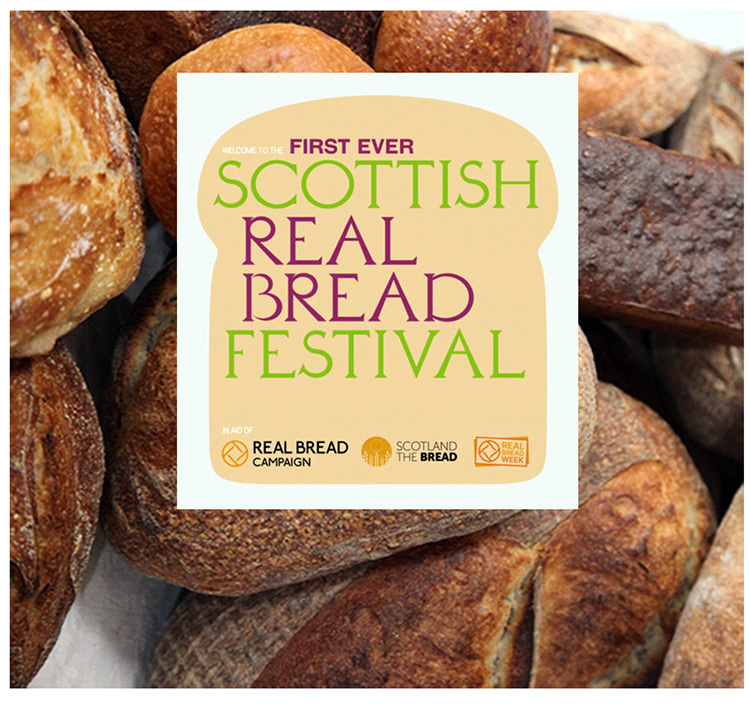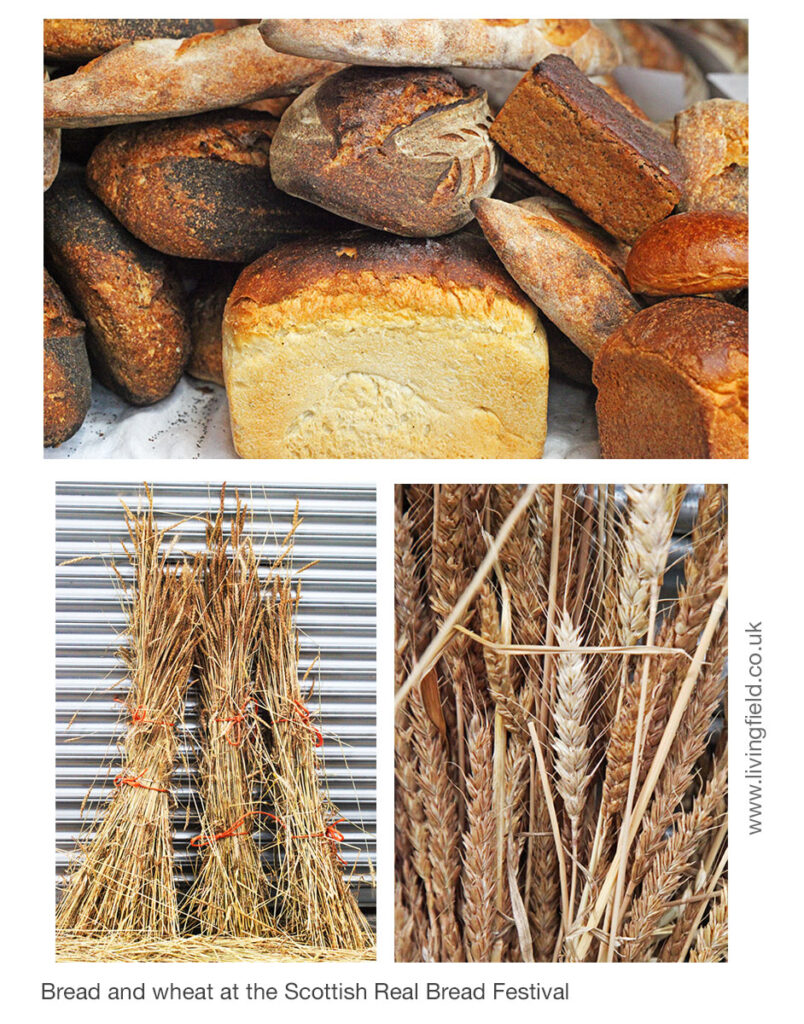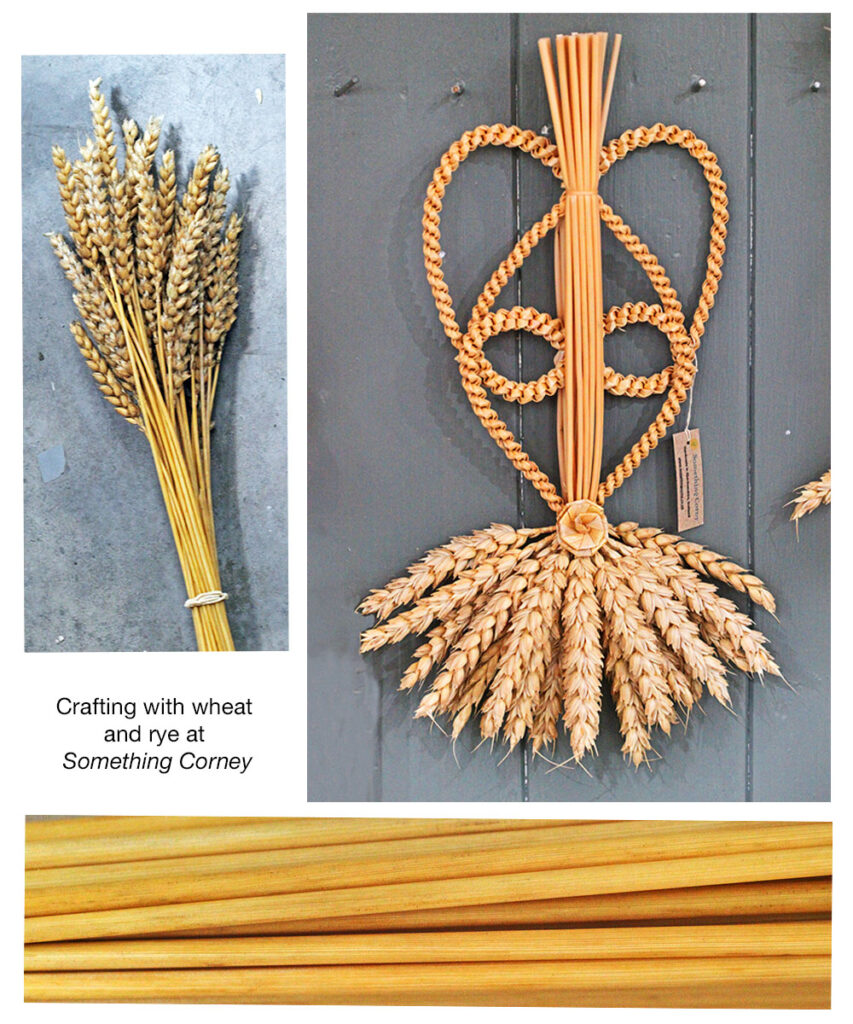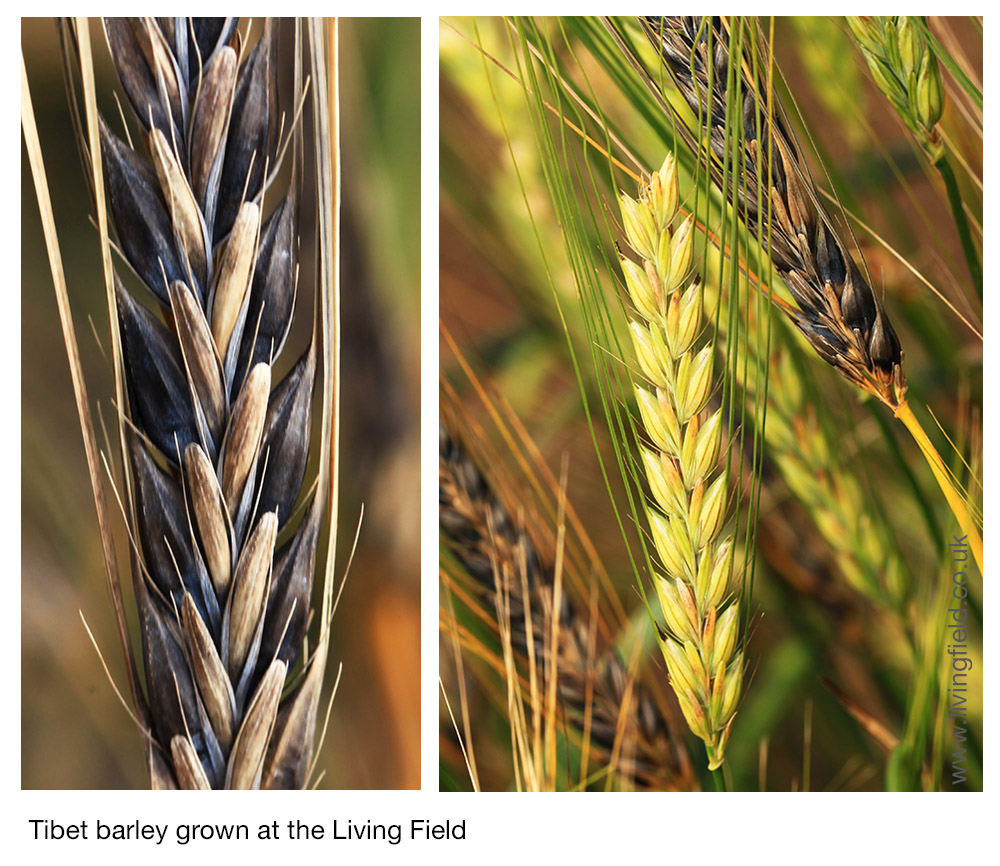At the Bowhouse, St Monan’s Fife – the first Scottish Real Bread Festival – 25 February 2023 – hosted by Scotland the Bread. The Living Field went to see what was happening.

Well … you can’t grow bread wheats in Scotland they say. But on this day Scotland the Bread [1] hosted the first Scottish Real Bread Festival [2]. The venue – at the Bowhouse, St Monans, Fife [3] – was packed with people seeing, selling, eating and debating flour and bread grown, milled and baked locally.
There were presentations and discussion through of the day, people sitting on hay bales, listening and asking.
Earlier, bakers had entered their loaves in the bread contest. A panel of experts had made a decision and the winners were announced and awarded. The loaves were all laid out on a table and given away at the end of the day.

Scotland the Bread‘s own flour, milled from local wheat landraces, was on sale ….. and went like hot loaves.Some sheaves of bread-wheat landraces were on display (lower images above), grown locally in the soil and climate of Fife. The plants are much taller than modern wheat varieties – due to the length of stems or ‘straw’ [4].
Long straw was once valued as a base for rope and string or used regularly in craftwork to make home decorations. Something Corny [5], based in Aberdeenshire, gave demonstrations and workshops through the day. The photos below shows some of their raw materials and a finished wall hanging.

Barley is rarely used in bread today but was once widely eaten in Scotland as a flatbread or bannock. Its use in food has been promoted by the Living Field for some years [6]. It’s a nutritious corn. And people from the Rowett Institute, Aberdeen were present to talk about their research on barley landraces in human health and nutrition [7].
One of their posters described how a variety of barley from Tibet – a black barley – was being hybridised with other varieties and landraces at the James Hutton Institute. Tibet and its hybrids are high in fibre and miconutrients, and also in beta-glucan which may lower cholesterol.

The organisers and hosts put on a great show, well attended and well appreciated. Here’s hoping that milling and baking with local wheat grows and thrives.
Links and further information
[1] Scotland the Bread: local grains, cereal landraces, milling for flour, baking, community, food, campaigning for healthy, nutritious bread.
[2] Scottish Real Bread Festival: see Sustain at Scottish Real Bread Festival and Championship 2023 and Real Bread Week.
[3] Bowhouse – Connecting you to your local produce – a venue in St Monans Fife.
[4] The heights of landrace wheat and modern wheat are compared on the Living Field’s Cereals page. Ed: it looks like the long stems in the photograph above were tied with old-style, orange baler twine – brings back memories of sunburn and sore backs from lifting those small rectangular bales before the big round ones became standard!
[5] Elaine Lindsay practices and teaches straw work at Something Corny based at Inverurie, Aberdeenshire – check the online workshops.
[6] The Living Field has long promoted the use of flour from locally grown grains – mainly oats and barley – in flatbreads and other foods: see Bere bannocks, Bere scones, Bere battered fish, Peasemeal Beremeal Oatmeal, for bread made with barley and insects Bere and Cricket, and for further links to barley landraces The Bere line – rhymes with hairline.
[7] The Rowett Institute Aberdeen: Black barley study. The Rowett have also produced a booklet on recipes made with oats and barley.
Contact for this page: geoff.squire@hutton.ac.uk or geoff.squire@outlook.com
